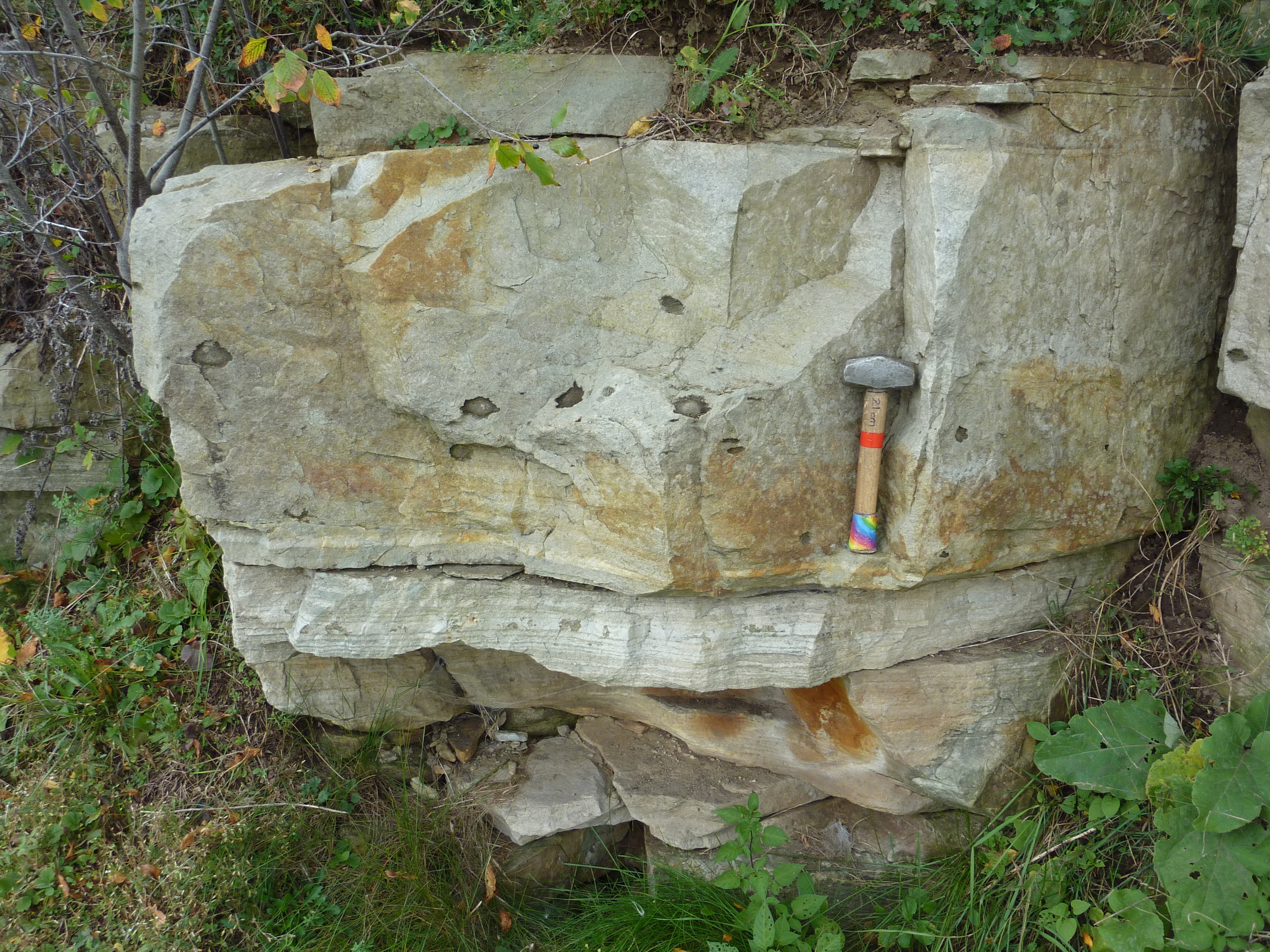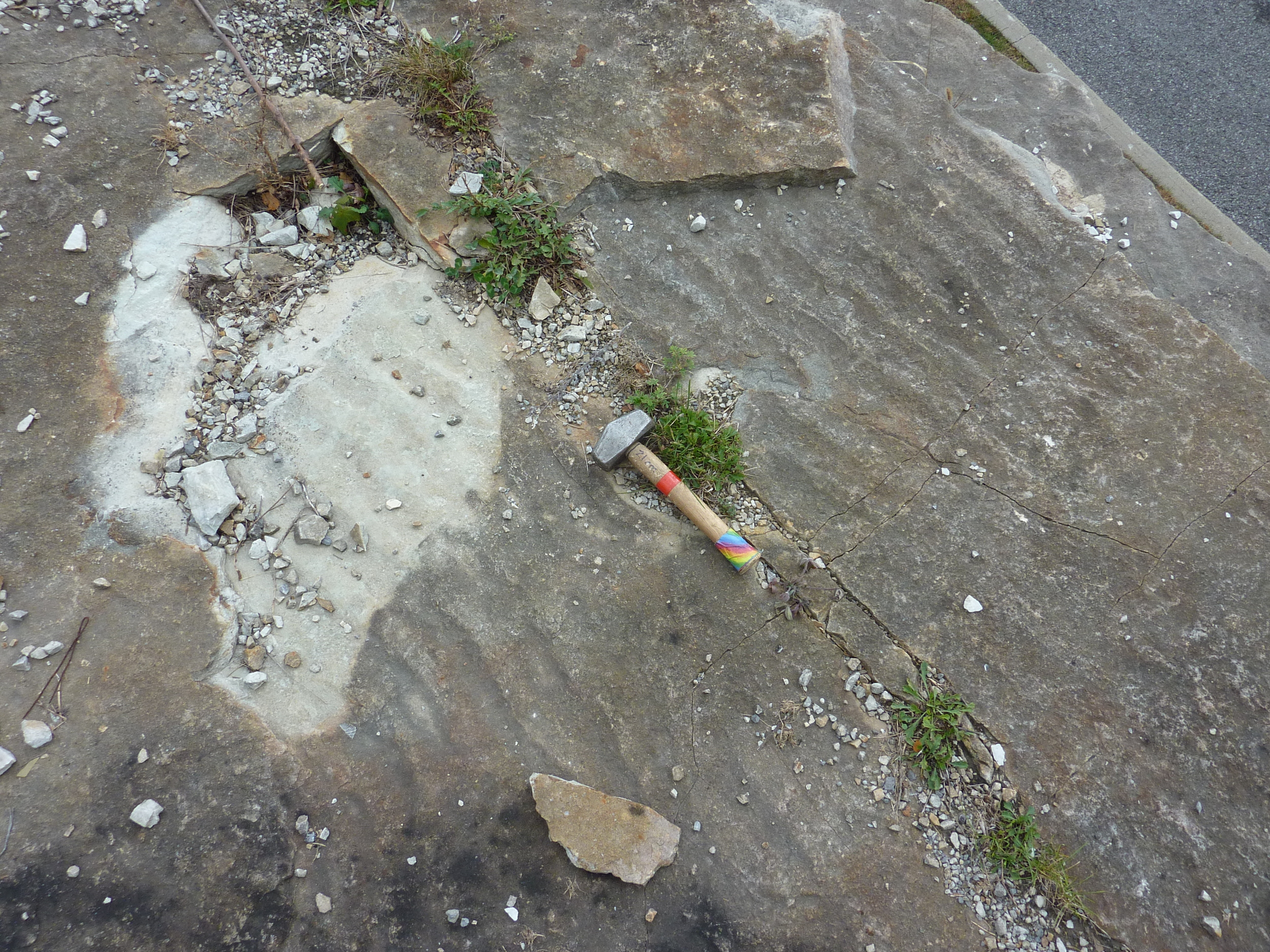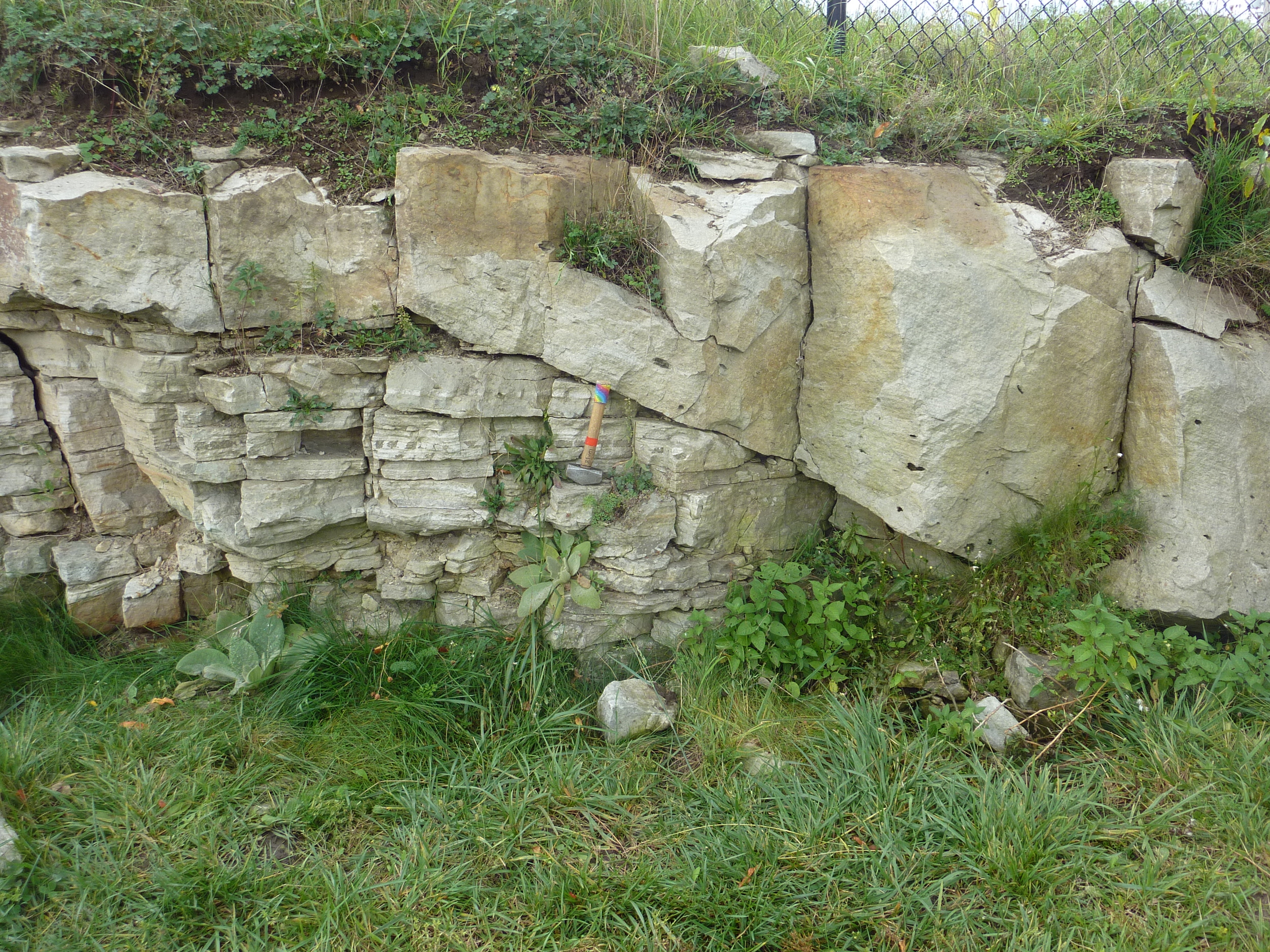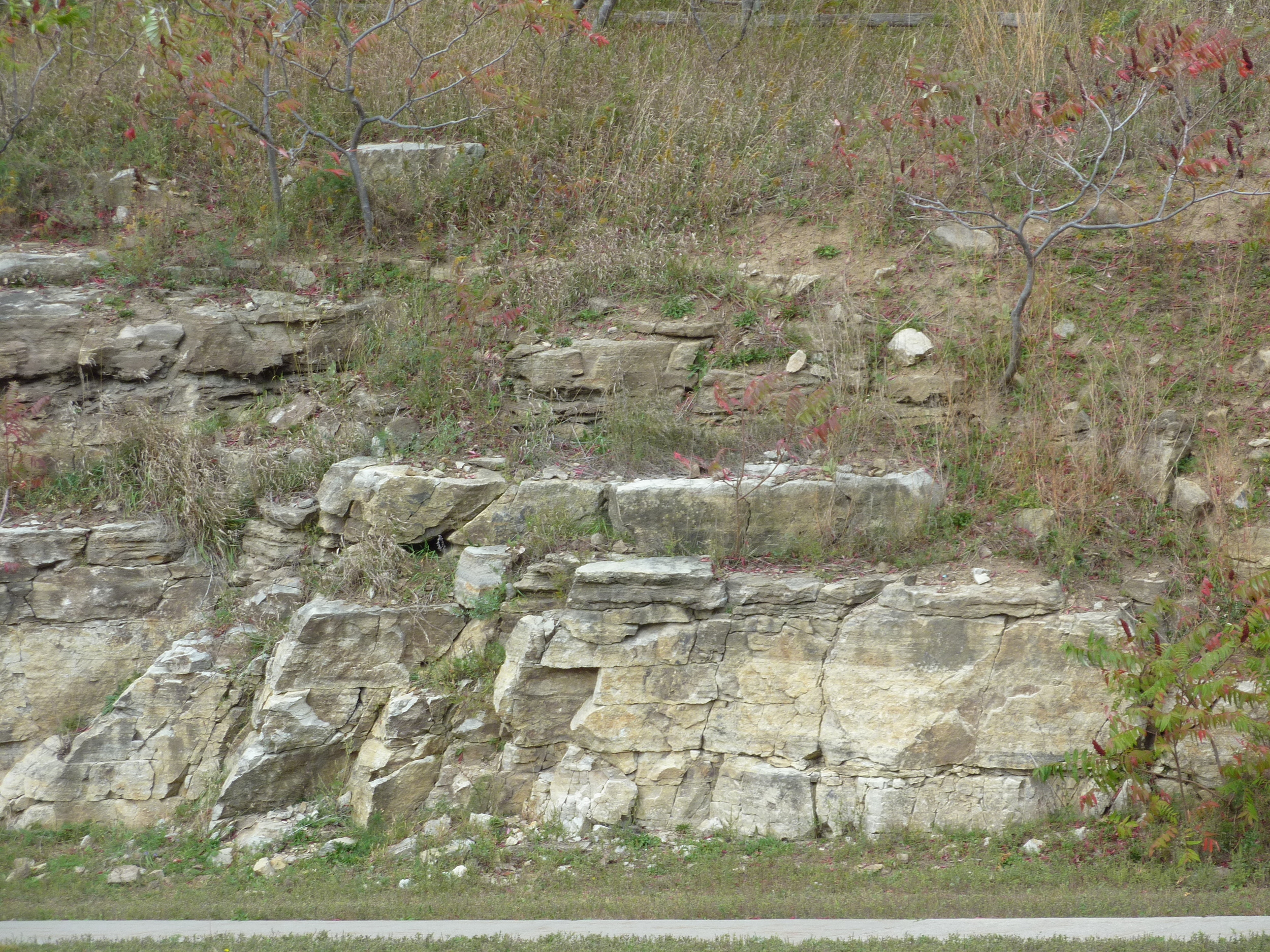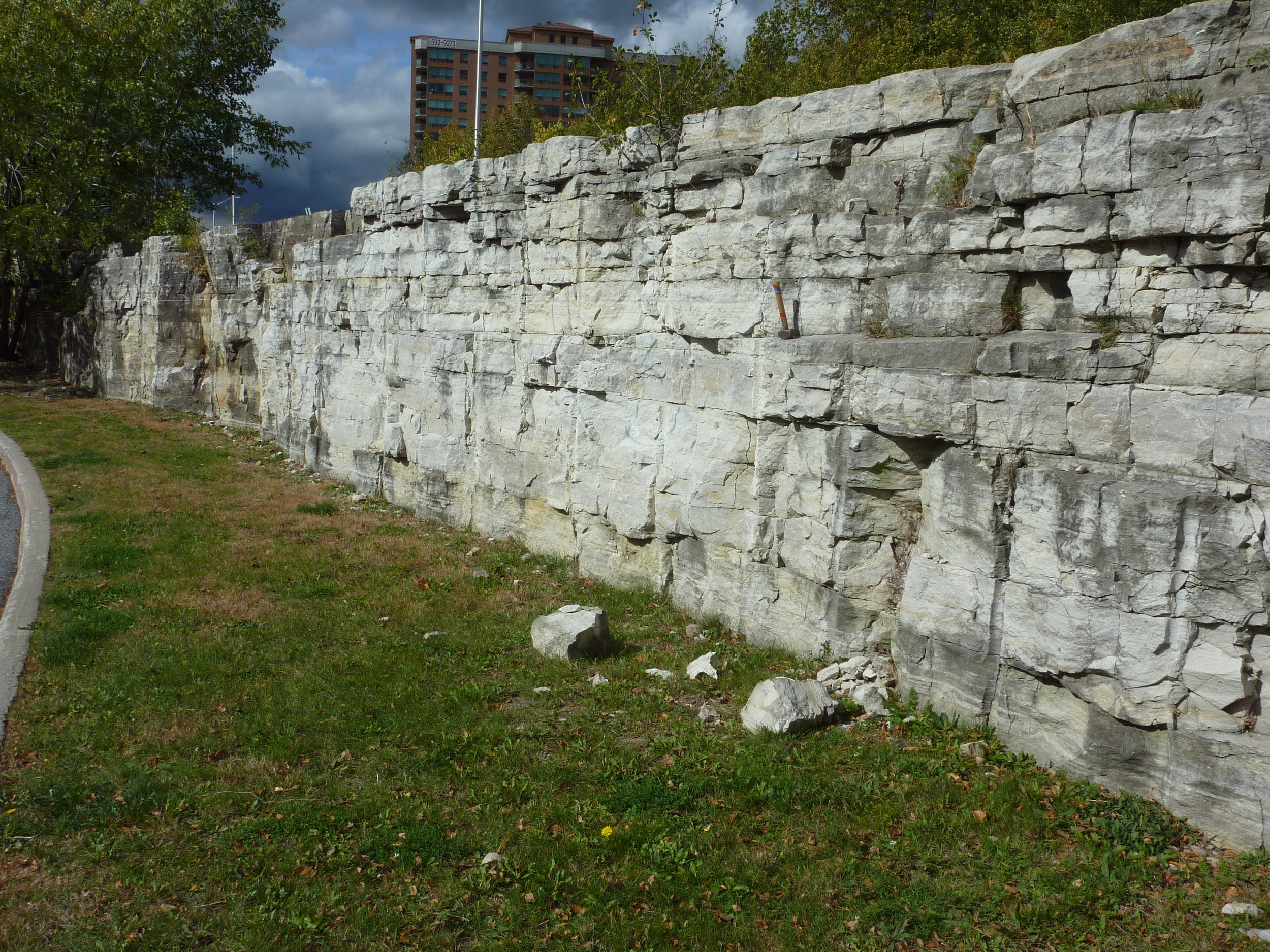2. Centrum Parking Lot
Section through Nepean and March Formations' sandstones and dolostones
Centrum Parking Lot
Kanata Ave. and Earl Grey Dr., Kanata, Ont.
Nepean Sandstone outcrop behind Walmart Store, Centrum Plaza, Kanata.
Photo by Q. Gall
The outcrop provides a vertical section of the upper part of the Nepean Formation (sandstone) passing into the basal part of the overlying March Formation (top of outcrops). The few metres of vertical section at this stop record thousands of years of sand deposition during the late Cambrian to early Ordovician, which was followed by burial and subsequent lithification and uplift.
The lower section is exposed behind WalMart and also below the southeast corner of the Earl Grey intersection. Here, the quartz-rich sandstone of the Nepean Formation displays abundant cross beds formed by the migration of subaqueous dunes during sand deposition. Joints (fractures) in the section provide a three-dimensional view of some of the cross beds, making it possible to determine the paleocurrent flow direction. Several joint faces are covered with oxidized crystals of marcasite, a polymorph of pyrite. At the top of the lower section, some ripple marks can be seen, and a few, millimetre-scale circular depressions interpreted as ancient rainprint marks.
Transition from Nepean Formation sandstone to March Formation dolomite beds (darker), east side of Kanata Dr. at Centrum Plaza.
Photo by Q. Gall
The Nepean sandstone is extensively used as a building and/or decorative stone on many of our prominent buildings (parliament buildings) and older homes in the Ottawa area.
(Note: The Nepean sandstone also outcrops along Hwy 417 at the Terry Fox overpass and also between Eagleson and Moodie Drive.)
Across the road, on the east side of Kanata Ave., is the transition into the March Formation that overlies the Nepean Formation. The outcrop has dolomitic carbonate beds as well as quartz-rich sandstone beds. Some fossil fragments are found in the dolomitic beds. The sandstone shows ripple marks, cross bedding and dewatering structures (features formed when waters escape sometime following deposition dish-, pillar- and pipe- shaped features formed as water escapes during consolidation of coarse sediments). The beds are tilted westward on the east side of the road, but are nearly horizontal on the west side. This relationship appears to be due in part to draping of the sandstone beds against an 'island' of Precambrian 'basement' rock to the east. The paved path above the staircase is bordered by numerous outcrops of Grenville gneiss and granite.
